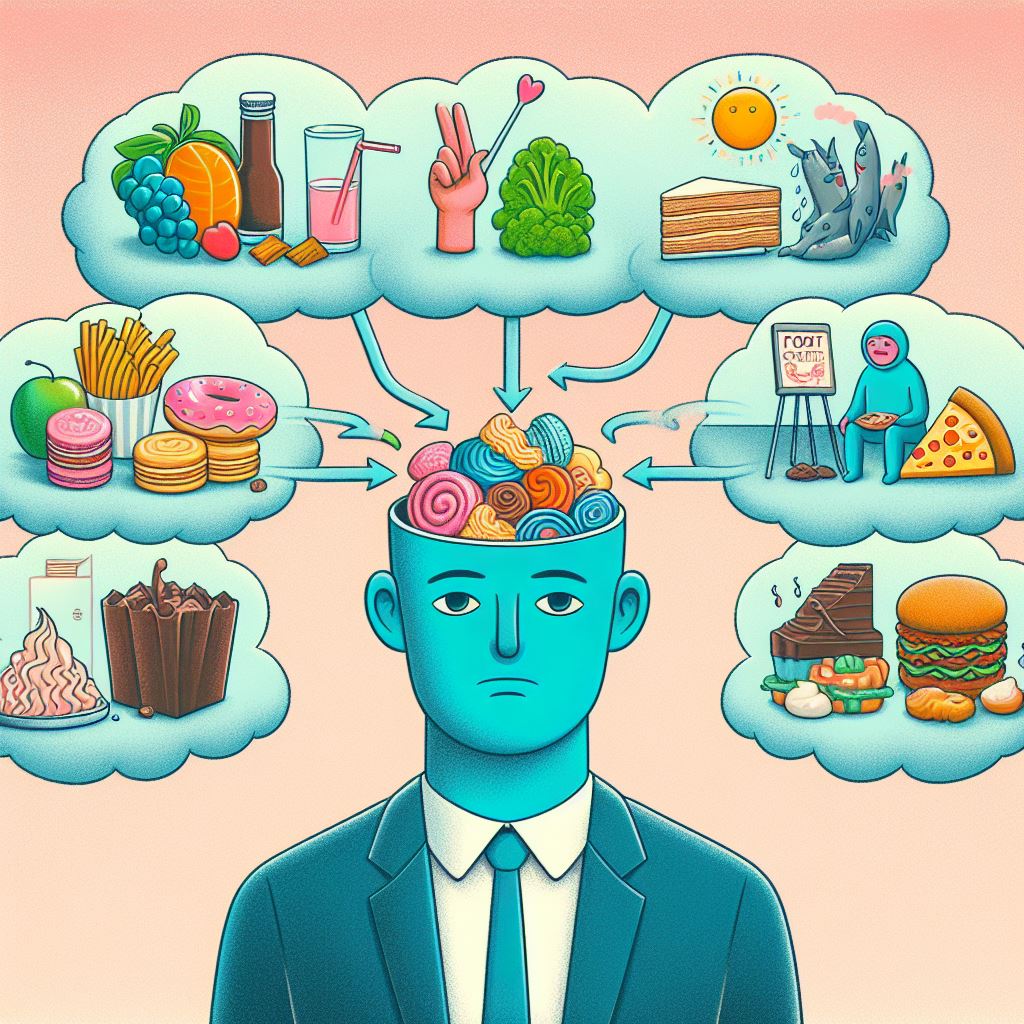
Introduction
Food cravings are more than just fleeting desires for a particular dish; they are intense, specific urges that can be triggered by our emotional states. While the popular notion suggests that cravings arise from nutritional needs, recent research reveals a more nuanced picture. Let’s explore the relationship between emotions and food cravings, along with practical strategies to balance our moods through mindful eating.
1. The Phenomenology of Food Craving
- Common Occurrence: Food cravings are extremely common, especially among young adults.
- Liking vs. Intake: Cravings are closely associated with liking but not necessarily synonymous with increased food intake.
- Rich Information: Structured interviews and prospective accounts shed light on the character, antecedents, and consequences of food cravings.
2. Emotional States and Cravings
- Dieting Influence: Dieting or restrained eating tends to increase the likelihood of food craving.
- Fasting and Hunger: Fasting diminishes both hunger and craving.
- Unavailable Food: Attempted restriction or deprivation of a specific food leads to increased craving for that very food.
- Underlying Processes: Cognitive, conditioning, and emotional processes contribute to food cravings.
3. Foods and Emotional Balance
Negative Emotional States
- Anger and Frustration: When feeling angry or frustrated, we often crave comfort foods—high-calorie, high-fat options like pizza, burgers, or ice cream.
- Balancing Choice: Opt for whole-grain alternatives like quinoa or brown rice, which stabilize blood sugar levels and provide sustained energy.
- Sadness and Loneliness: During moments of sadness, we seek solace in sweet treats like chocolate or pastries.
- Balancing Choice: Choose dark chocolate (with higher cocoa content) or fresh fruits to satisfy the sweet craving without the sugar crash.
- Fear and Anxiety: Anxiety triggers a desire for crunchy, salty snacks such as chips or pretzels.
- Balancing Choice: Munch on air-popped popcorn or roasted chickpeas for a healthier crunch.
Positive Emotional States
- Joy and Celebration: When happy, we often indulge in rich, indulgent foods like cake or creamy desserts.
- Maintaining Joy: Enjoy these treats occasionally, but balance them with nutrient-dense meals rich in fruits, vegetables, and lean proteins.
- Elevating Happiness: Certain foods boost mood and overall well-being:
- Mussels: High in vitamin B12, which supports brain health.
- Swiss Chard: Rich in magnesium, essential for energy levels.
- Blue Potatoes: Anthocyanins provide neuro-protective benefits.
- Dark Chocolate: Enhances concentration and blood flow to the brain.
Conclusion
Our relationship with food is multifaceted, influenced by both our emotional states and physiological needs. By understanding these connections, we can make mindful choices to support our mental and physical health. So, next time you’re tempted by a craving, consider the underlying emotions and opt for foods that nourish both body and soul.
Remember, food is not just fuel—it’s a powerful ally in our journey toward well-being.
Now let’s explore how Natural Bioenergetics, also known as Health Kinesiology, can benefit individuals in the context of emotional balance and food cravings.
Natural Bioenergetics (NB) is a holistic approach to health and well-being that empowers individuals to take charge of their own health. Here’s how it complements the article’s exploration of emotions and food cravings:
- Identifying Imbalances: NB practitioners use a technique called muscle monitoring to access information from the subconscious mind. By assessing health issues and identifying root causes, NB helps pinpoint imbalances related to emotional states and cravings.
- Energy Flow and Healing: Just as the Five Elements Theory emphasizes harmonizing energy flow, NB triggers and balances self-healing using Chinese medicinal systems like acupressure. It ensures that our inner energy flows smoothly, reducing stress and promoting overall well-being.
- Personalized Food Recommendations: NB goes beyond traditional nutrition. It can identify the specific foods needed at any given moment. Whether emotional, physical, or biochemical, NB guides individuals toward nourishing choices that support their healing journey.
In essence, Natural Bioenergetics bridges ancient wisdom with practical solutions, allowing us to dance in harmony with our emotions and find healing through mindful choices.
References:
- Natural BioEnergetics Institute UK
- Harmony Matrix, Health Kinesiology and Home healing
- Harmonizing the Meridian System: Restoring Balance through 5 Element Meridian Theory
- Hill, A. J. (2007). The psychology of food craving. Proceedings of the Nutrition Society, 66(2), 277-2851
- Firth, J., et al. (2020). Food and mood: how do diet and nutrition affect mental wellbeing? BMJ, 369, m23822

